Astrophotography, the pursuit of photographing the night sky in all its cosmic glory is a magical one. Whether capturing the glowing arc of the Milky Way, or nebulae and far-off galaxies in your M42 telescope, star photography begins with both technique…and equipment. Having a great camera is important, of course, but what can make or break your night sky images is the lens.
The true beauty of the stars can only be seen in a sky full enough for you to encompass with your hand, thus capturing all their light on camera is crucially important; astrophotography also needs sharpness and a wide field for seeing as many stars at once. In this article, we’ll explore the best lenses for all types of astrophotography, including shooting wide star-filled landscapes to zooming in on even more distant celestial objects. Want to take your night sky photos to the next level? Now let us look at the lenses that can enable you to click breathtaking astrophotgraphs like a pro.
What do you want in a good lens for astrophotography?
Key Features to Consider
But first let’s talk about what to look for in a lens before we begin standing lenses – essential features for astrophotography
- Aperture: The wider your maximum aperture (f/2.8 or lower), the better it’s going to be at collecting more light, important when shooting in low-light conditions
- Focal Length: For capturing a wide-field view of the Milky Way, aim for focal lengths between 14 and 35mm. Having said that, the longer focal lengths (50mm or greater) are fantastic for zooming right in on individual celestial objects.
- Optics Quality: Sharpness all the way to corners, as stars can appear unsharp due common decentering within lower-quality lenses.
- Low Chromatic Aberration: While very subtle in this image, chromatic aberration can add color around stars so a lens with low CA is needed to reduce the effect.
- Distortion Control: If you are working with wide-angle lenses, some of them distort images to a great extent which should definitely be taken into account when preparing for night sky photography.
Now that you know what to look for in a lens, let’s explore the top recommendations
Top Wide-Angle Lenses for Astrophotography
1. Rokinon 14mm f/2.8 – This one is known for being a great balance of affordability and reliability even in the dark forest conditions!
One of the most attractive lenses for astrophotography is Rokinon 14mm f/2.8 due to its optic quality as well as price point. The Universe 35 is excellent for shooting wide-angle Milky Way shots or just broad swaths of the starry sky.
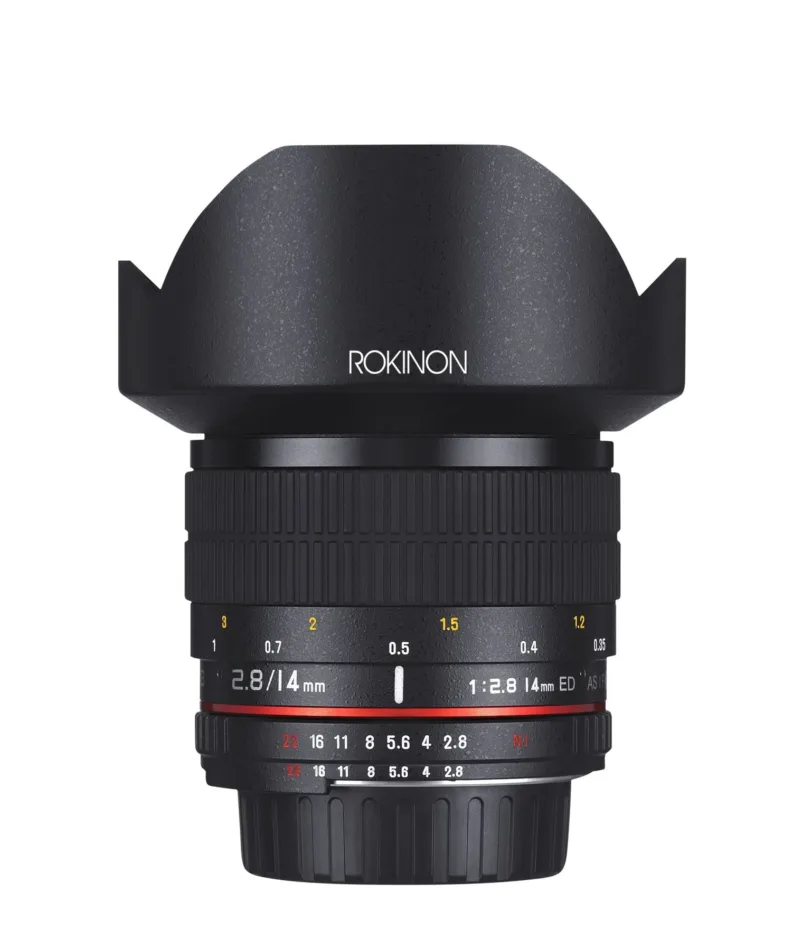
Image Source : rokinon.com
Pros:
- Great value for the price
- Wide field of view
- Low chromatic aberration
Cons:
- Manual focus only
It serves as a great beginning step for anyone interested in getting into astrophotography at a low price point.
2. Sigma 14mm f/1.8 Art – Ultrawide Ultrafast for low lights
Sigma 14mm F1.8 Art Shot with f/2, f3 and wide open at -35F. The Sigma 14mm F1.8 offers one of the widest apertures in any rectilinear lens (12 elements on compact glass) making it great for night sky photography where this level of very low light performance is only possible using speeds below ISO3200, which can bring stretch noise to levels well over what shooting super fast lenses offer even when shot at faster processing rates provided by digital cameras today. It’s f/1.8 aperture makes it a great choice for shooting in low light, which allows you to capture more detail of the stars and Milky Way.
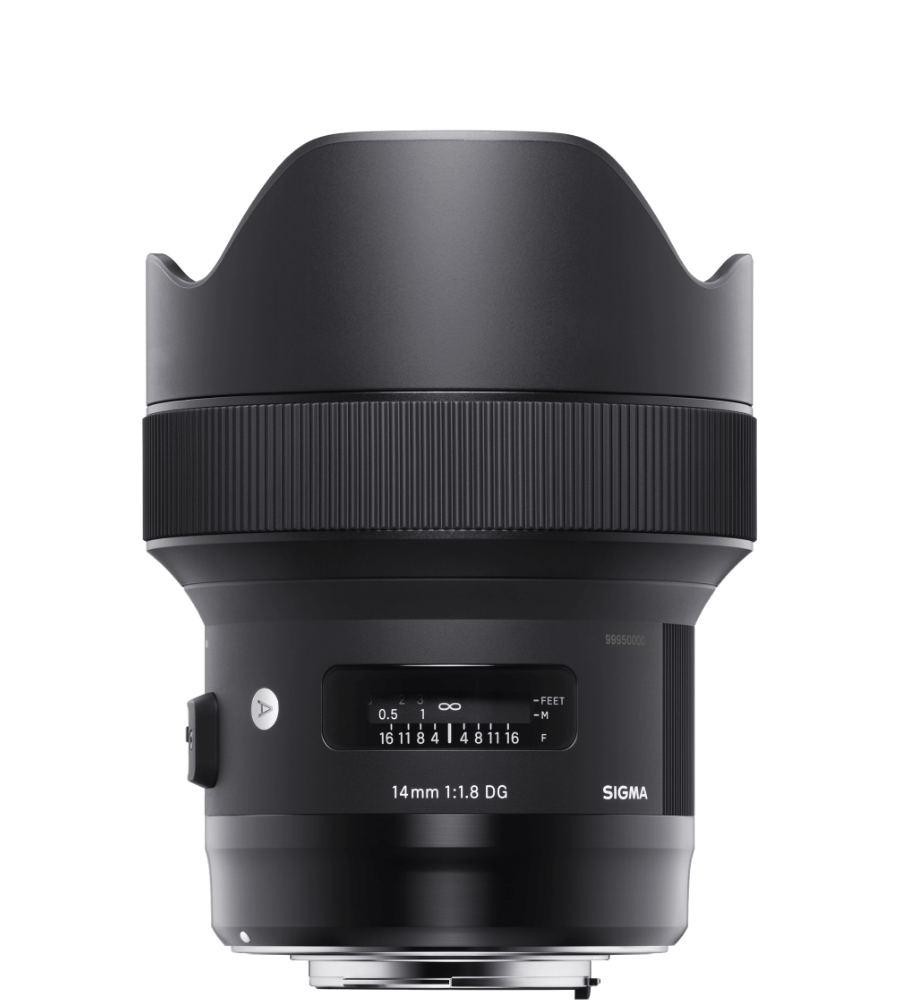
Image Source : sigma-global.com
Pros:
- f/1.8 aperture which collects more light as wide open
- Very good auto focus performance (PIE) – High level of optical quality and sharpness
- Very low distortion for a wide-angle lens
Cons:
- Expensive
Sigma 14mm f/1.8 Sigma is the first and only manufacturer to make an autofocus lens faster than this manually focused Canon FD L [Canon does not actually produce it; instead, Leica had made a few manual-focus lenses slightly wider] which sells for four times more!
Best Zoom and Prime Lenses for Astrophotography
3. Canon RF 15-35mm f/2.8L IS USM – Versatile with Image Stabilization
Zooming from 15mm to 35mm, this lens is a versatile option offering the best of both worlds: wider images capturing as much of serached-for Milky Way area and tighter shots featuring celestial compositions. This can help to reduce blurring in low-light conditions, but for truly crisp and clear images you’ll need a tripod.
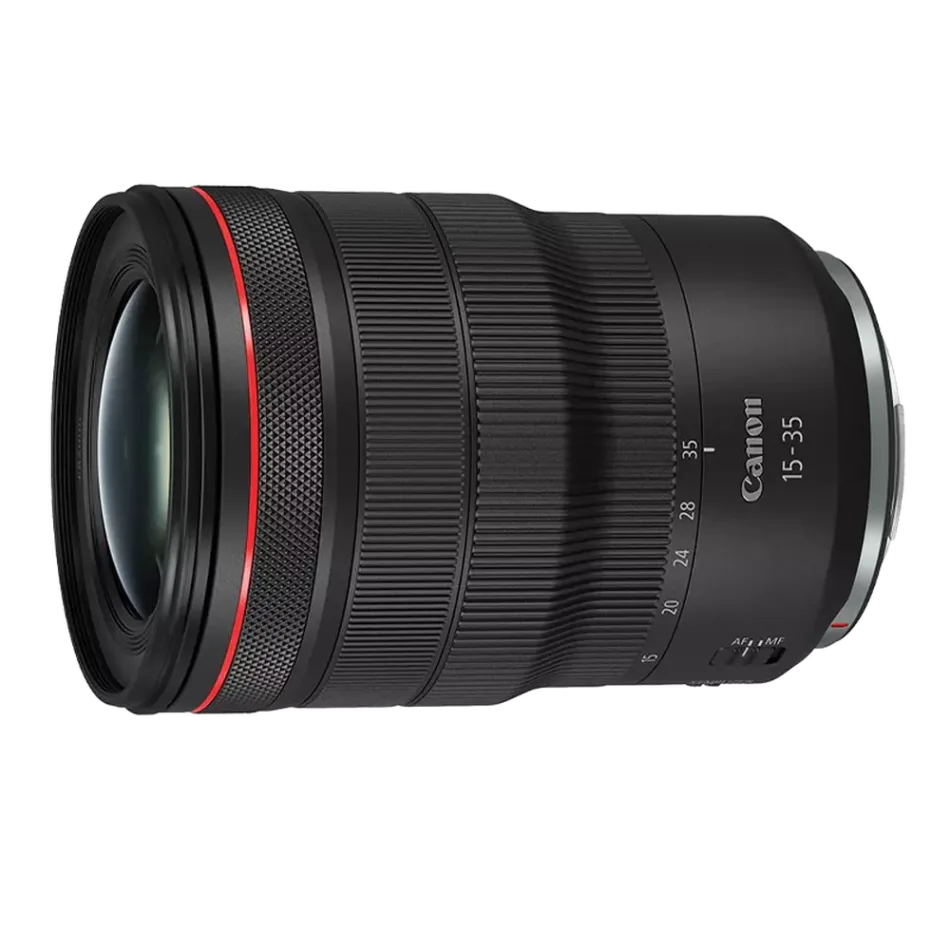
Image Source : focusnusantara.com
Pros:
- Versatile zoom range
- In-camera Image Stabilization
- Weather-sealed to withstand the outdoors
Cons:
- Bigger and heavier than prime lenses
If you are looking for a lens that pretty much has it versed in astrophotography, as well some other areas of photography, then the Canon RF 15-35mm could seriously be perfect.
4. Sony FE 24mm f/1.4 GM — For Full-Frame Astrophotography
Two of the sharpest lenses out there for astrophotography are designed by Sony to be used with their full-frame mirrorless cameras, and this is one — The Sony FE 24mm f/1.4 GM lens. It is at a wide 24mm focal length which balances field of view and light gathering power very well, making it perfect for Milky Way photography with neither stopping short nor overly extending past.
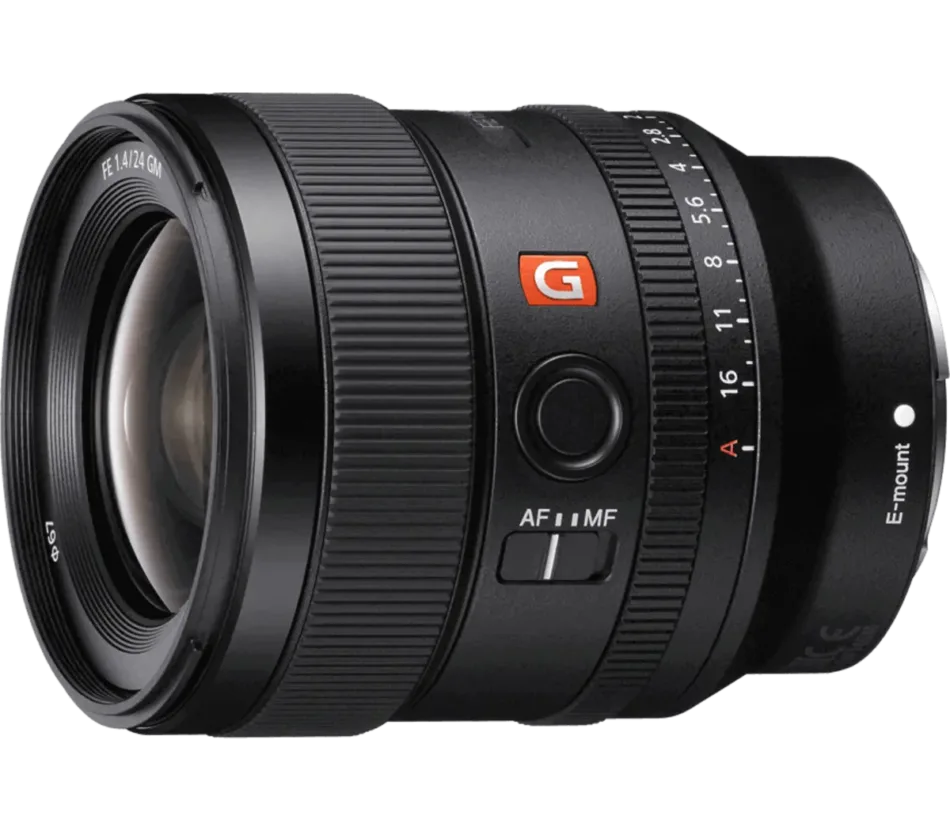
Image Source : electronics.sony.com
Pros:
- Ultra-sharp, almost no distortion
- Fast f/1.4 aperture
- Lightweight and compact
Cons:
- Expensive for a prime lens
This is kind of a best in class lens (I know few sony users) to grab star shots that are sharp and vivid.
5. Nikon AF-S NIKKOR 70-200mm f/2.8E FL ED VR – Stars nestled into the zoom lens
Though it is the wide-angle lenses that are usually believed to be best for astrophotography, with a telephoto lens such as this could enable you to zoom in on further off celestial items like planets and moon. There is fast autofocus and vibration reduction, so this lens will work great for more detailed shots where you really want to pinpoint a target in the night sky. See the product at Official Store.
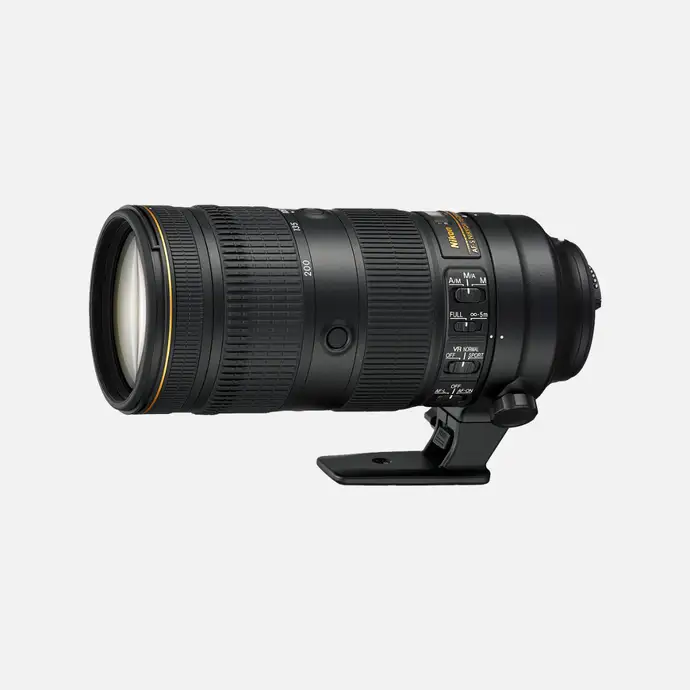
Image Source : nikon-asia.com
Pros:
- Versatile zoom range
- Image stabilization (for steadier photos and video)
- Weather-sealed for outside usage
Cons:
- Heavy and bulky
- Expensive
But if you want to take pictures of not only the night sky but also lunar details or even do some astrophotography with planets, this telephoto lens is a great choice.
6. Tamron SP 70-200mm f/2.8 Di VC USD G2 — Best Value High-performance Low-cost
Another great budget-friendly telephoto lens for astrophotography is the Tamron SP 70-200mm f/2.8. This lens provides high image quality for a fraction of what you’d pay for the Nikon or Canon alternatives.
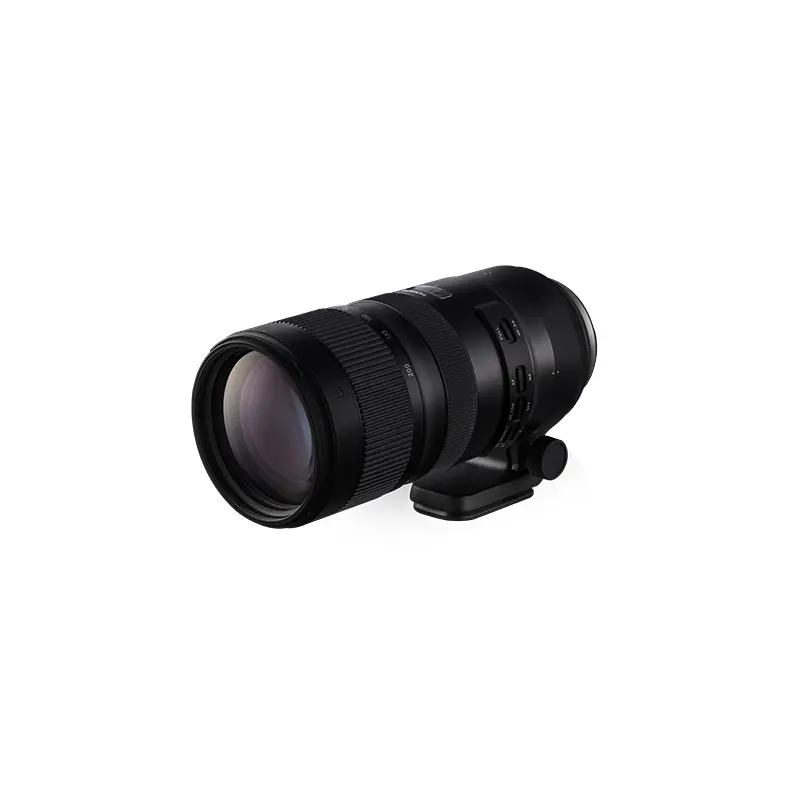
Image Source : https://www.tamron.com/
Pros:
- Excellent value for money
- Vibration control for more stable handheld shots
- Fast autofocus
Cons:
- A little heavier than most alternatives
- A really good balance of price and performance if you want to dabble in astrophotography without bustin’ the bank.
Tips for selecting appropriate lens
The choice of your lens is an important point in astrophotography and can afflect greatly the quality of your photos. Shooting the night sky offers its own hurdles — low light, far off subjects and near-ubiquitous need for sharpness right to the edge of frame – so being armed with the correct tool is vital. Now, a deeper dive into everything you need to know when it comes time for selecting that lens.
1. Budget
- Pro Lenses: A lens with top-tier optics, a large aperture and almost zero distortion that is often found from Sigma, Canon & Nikon can cost you quite an amount. For a hobbyist or professional pursuing astrophotography as anything more than casual images, it is best to spend extra on a good lens if they use one frequently.
- Cheaper Alternatives: For beginners there are many cheaper but good enough alternatives, such as the Rokinon 14mm f/2.8 which performs decently at a fraction of the price. You are not getting all the fancy features of a high-end lens but it is definitely more affordable and you can still shoot beautiful night sky pictures.
2. Focal Length
- Wide-Angle Lenses (14mm–35mm): These lenses are wide enough to capture lots of sky and great for Milky Way panoramas. And the wider one will capture more sky in a frame so it is best for astrophotography landscape shots.
Example: A 14mm lens provides a chance to capture additional stars in addition to foreground elements like mountains and trees.
- Telephoto Lenses (70mm and above): More fit for zooming into particular celestial objects, like the moon, some planets or distant nebulaes. Telephoto Lenses: These get less use for large Night sky shots but are a great way to explore close-up images of the heavens.
Example: a 200mm lens would allow detailed moon crater pictures or planetary close-ups.
3. Aperture
- Wide Apertures (f/2.8 or lower): The aperture of a lens will dictate just huch dark you see in your photo. Astrophotography is performed in low-light conditions, so you want a faster lens (lower f-stop number) to collect more light. Without it the sky would be filled with noise as well as blurs given how, even in near-starlight conditions shooting stars can easily appear streaky or contain trails.
Example: A lens with an f/1.4 aperture like the Sony 24mm f/1.4 GM will let a lot more light reach your sensor, making faint stars easier to capture
- Trade-off with Depth of Field: as good as wide apertures are for getting light, they also contribute to narrow depth of field—and that makes it difficult focusing. For astrophotography you want to have your focus set at infinity to maintain the sharpness of stars.
4. Portability
- Compact Travel Lenses: If you plan on hiking to where there is little light pollution, think portability. High-end lenses often bring with them some size and weight, however this might not be great for you if you’re planning a long hike or trek to off-the-beaten-path shooting locations. The lens is very weighty and massive, so reflect on the size of the atlas if you need to bring it with other lenses or kit.
Example: A compact prime like the Rokinon 14mm f/2.8 is lightweight and portable, which is excellent for traveling astrophotographers.
- Heavy Lenses for Stability: Some heavier lenses can perform better when mounted on a tripod, helping to reduce vibrations and movement. However, they also can need a heavier tripod to hold the weight up.
5. Image Quality and Sharpness
- Optical Performance: High edge-to-edge sharpness. Small stars are relatively dim, Diffraction causes the star image to be spread like a disk.
Example: Lenses such as Sigma 14mm f/1.8 Art are famous for their sharpness from edge-to-edge, making stars stay at least a little bit sharper even on the corner of the frame.
- Chromatic Aberration: A common optical issue that shows as a colored fringe, usually purple or green around stars. The effect that budget lenses will have on this is where they may start to run into trouble — high-quality glass tends to alleviate chromatic aberration but cheapo $100-$300 kits usually accentuate it. Fixing this during post-process can take some time, so if you are an astrophotographer its best to invest in a lens that has low chromatic aberration.
6. Lens Mount Compatibility
- Camera System Compatibility: If you have a Nikon camera, for instance, only specific lenses will be compatible with the Nikon DSLR (or mirrorless) bodies. To give an example a Canon RF mount lens cannot be use on Nikon DSLR camera without any adapter. While a ton of brands offer adapters, sometimes they can have an impact on the image quality and could bring one more step into your workflow.
Example: If you’re a Sony mirrorless user, lenses like the Sony 24mm f/1.4 GM are designed specifically for Sony’s E-mount cameras, ensuring optimal performance.
7. Weather Sealing and Durability
- Outdoor Conditions: Astrophotography often requires spending hours outdoors in potentially harsh conditions. For a weather-sealed one, it may be resistant to dew or cold temperatures, and maybe even dust and sand in case you want to shoot with your lens out of the car window on safari.
Example: Lenses such as the Canon RF 15-35mm f/2.8L IS USM are robust and weatherproofed, making them ideal outdoor astrophotography partners.
8. Specialized Features
- Vibration Reduction (VR) / Image Stabilization (IS): Some lenses are equipped with stabilization capabilities which help prevent camera shake. That’s nice when you’re shooting handheld, but less crucial for astrophotography where you’ll probably be on a tripod anyhow. Anyway, in some cases like moon or planet shots with a hand-held camera stabilization could be useful.
Example: The Nikon 70-200mm f/2.8E FL ED VR has vibration reduction that could be useful for improving sharpness when zooming in on some part of the sky, transformed into lenses zooms with appropriate for eyes, objects astronomy objects (BC)
We hope these select few tips will help guide and steer you into purchasing the best lens that fits your own astrophotography intentions, whether it is wide field shots of the massive crowd around our Milky Way or a close-up glimpse on Saturn’s rings and Jupiter red spot.
Conclusion
Astrophotography allows us to connect with the Universe while photographing its beauty in the night sky. Pick the best lens whether you are new or have some experience with photography, otherwise it may affect your final photos. Each lens has its particular strong point, from shooting expansive panoramas of the Milky Way with a wide-angle to zooming up close on faint objects in deep space with your telephoto. Pick an appeal that is catered to your playstyle and needs, and watch as you begin to unlock the secrets of the cosmos.